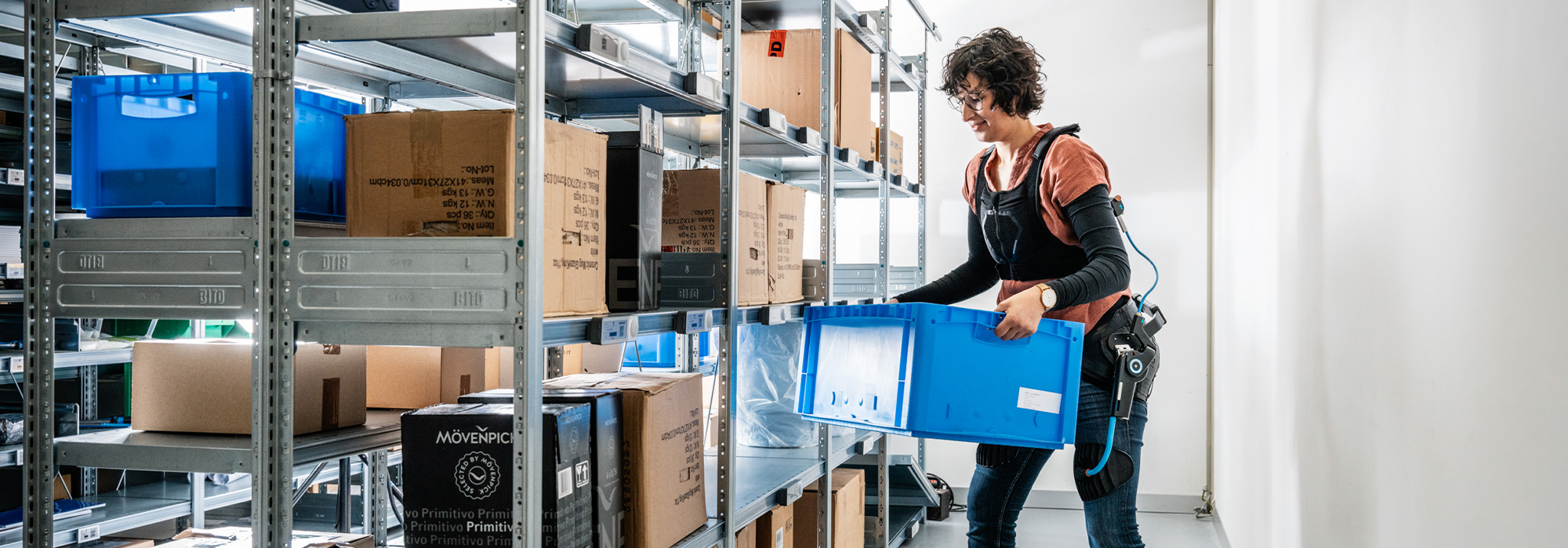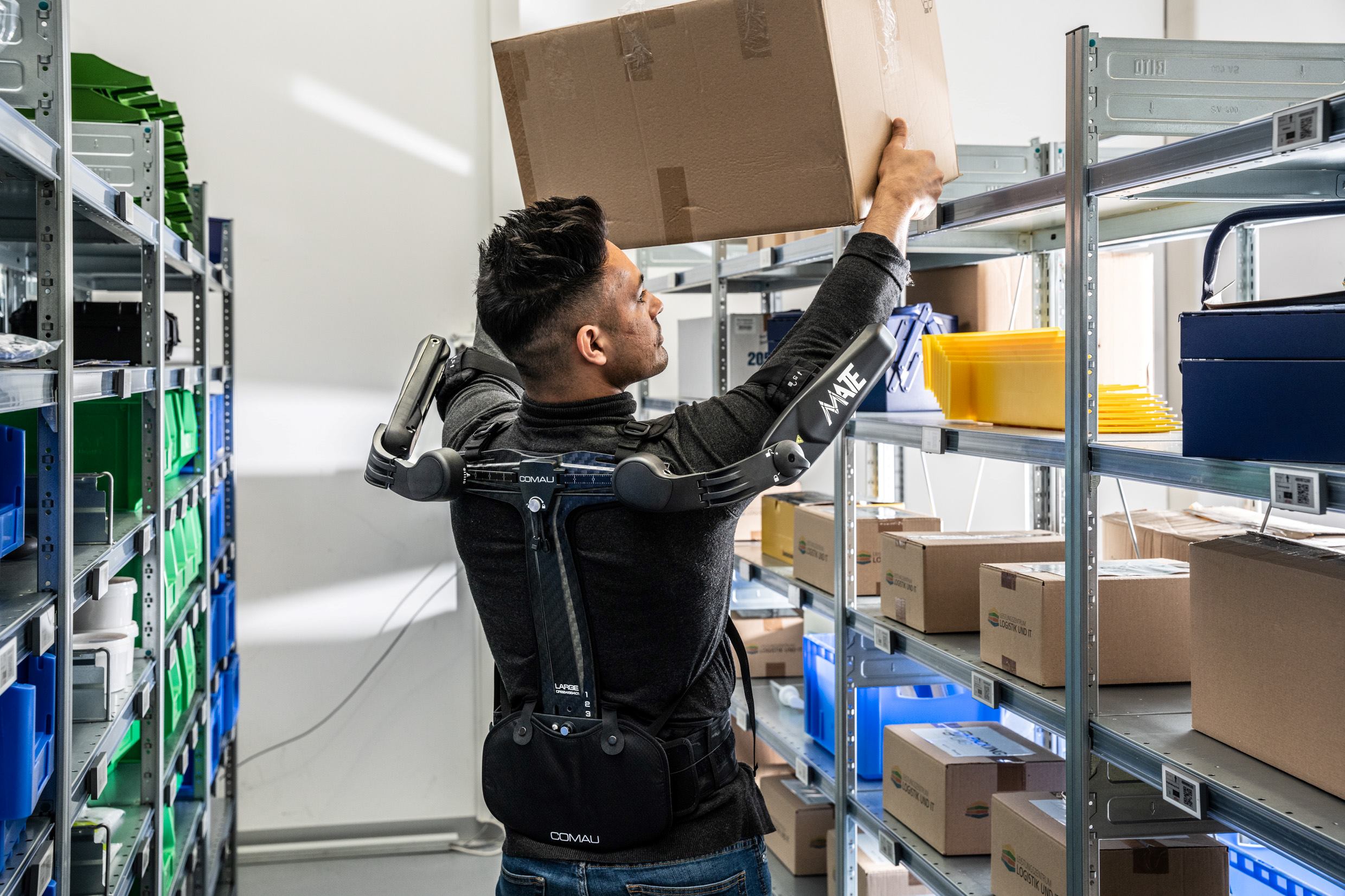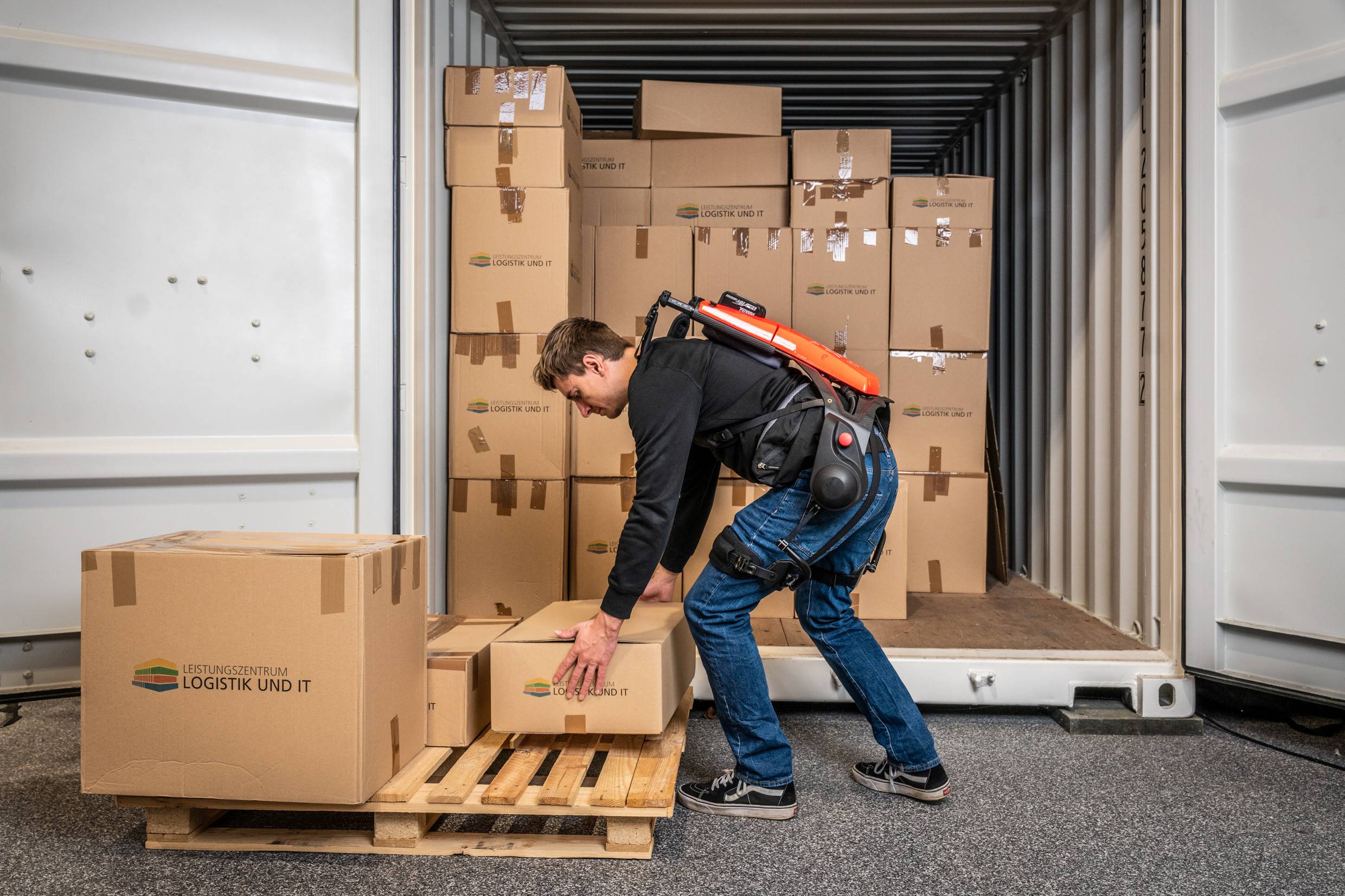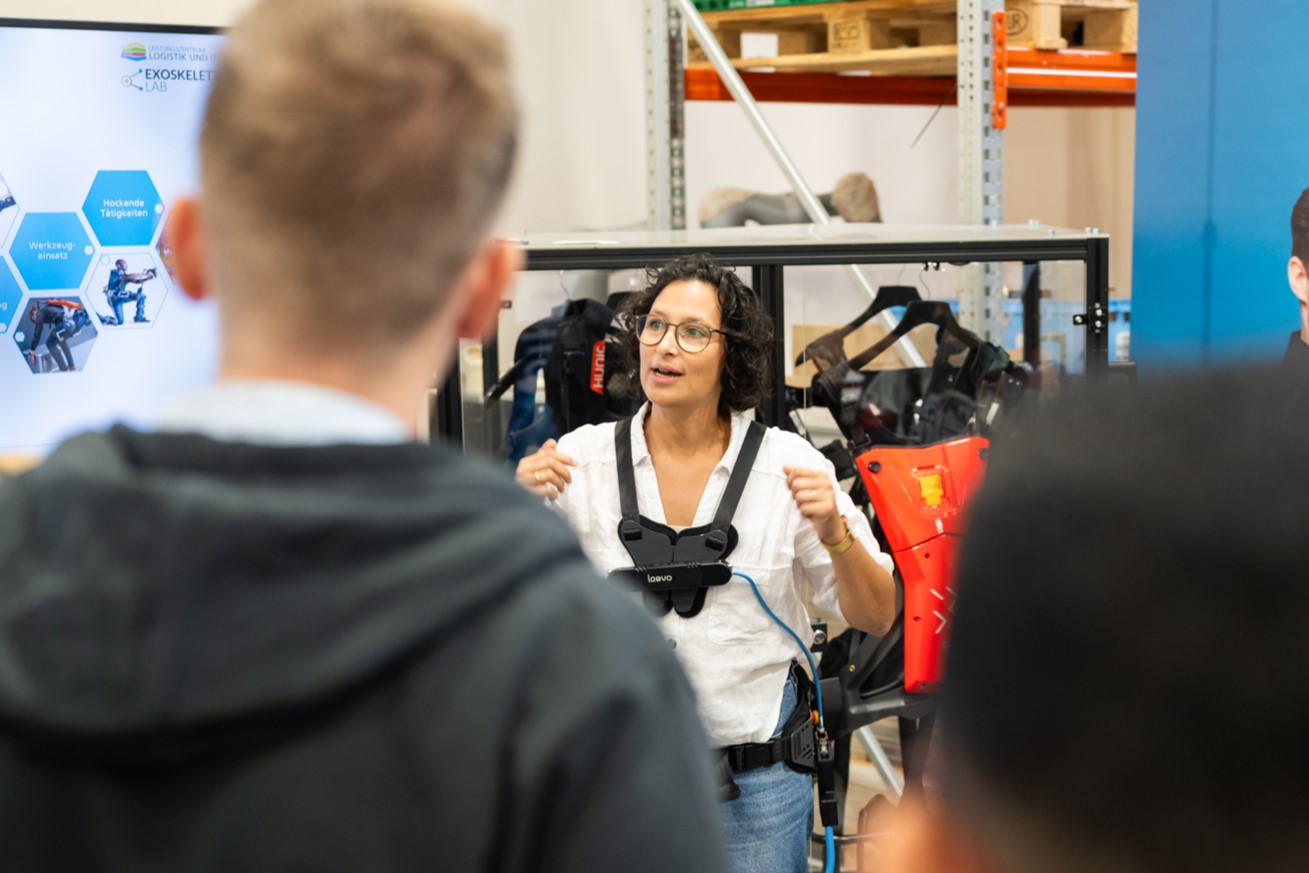
Exoskeleton research: relief for the logistics industry

Reducing workloads, optimizing workflows: exoskeletons for logistics
Exoskeletons are mechanical support structures worn on the body to assist with certain work activities or to relieve specific parts of the body. In logistics in particular, there are workplaces that cannot be optimized in terms of ergonomics, neither technically nor organizationally, and that involve a high level of physical strain. This is where the Exoskeleton Lab helps to make logistics activities less demanding and significantly reduce work-related risk factors. Exoskeletons can contribute to the prevention of muscle and skeletal disorders and minimize downtime without replacing people.
At the Exoskeleton Lab, research is conducted to determine for which activities and under which conditions the use of which type of exoskeleton can be recommended. A fundamental distinction can be made between active and passive exoskeletons. Active exoskeletons use sensors to detect the user's movements and convert them into control signals for electric or pneumatic drives. Passive exoskeletons work purely mechanically and are therefore much lighter to wear (in terms of weight). They usually have gas springs or elastomers that absorb energy during certain movements and release it back to the user during the opposite movement.
Our services
In the Exoskeleton Lab, the various exoskeletons can be tested in a logistics course that consists of typical activities from operational logistics. This includes both activities in which an exoskeleton can provide support and those in which it could be more of a hindrance.
The Exoskeleton Lab offers
- Workshop on the introduction of the technology, with exoskeleton fitting and workplace inspection
- Logistics course with exoskeletons
- Quick Check Exoskeletons: Technology introduction and exoskeleton testing at the workplace for operational employees in intralogistics processes
- Quick Check Ergonomics: Holistic ergonomic analysis to determine the need for the use of exoskeletons
- Studies and research on the effects of exoskeletons
The exoskeleton components are mobile and can also be used by interested companies for information events or ergonomic analyses. The results of our exoskeleton research to date confirm that workers subjectively experience relief during a palletizing task with an exoskeleton, but they also show the relevance of easy handling and a high degree of freedom of movement.
Ergonomic solutions: industrial exoskeletons



The Exoskeleton Lab is geared towards…
- Operators of production and logistics centers to support employees in physically demanding work, such as lifting and carrying
- Companies looking for solutions to improve work conditions
- Companies in the field of production logistics that want to improve the ergonomics of production processes
- Freight forwarders who want to test the exoskeletons to make loading and unloading of vehicles, containers or swap bodies easier
- Companies that want support in selecting the right technology

Privacy warning
With the click on the play button an external video from www.youtube.com is loaded and started. Your data is possible transferred and stored to third party. Do not start the video if you disagree. Find more about the youtube privacy statement under the following link: https://policies.google.com/privacyWhat are exoskeletons?
Exoskeletons are mechanical support structures worn on the body to support certain work activities or to relieve specific body regions. They support certain motion sequences, e.g. lifting and lowering loads, or static activities such as working above shoulder level.
How does exoskeleton technology work?
A distinction is made between active exoskeletons, which use sensors to measure the user's movements and convert them into control signals for electric or pneumatic drives, and purely mechanical passive exoskeletons. Some exoskeletons designed to relieve the lower back are intended to promote healthy posture during lifting operations. We are currently researching this with the aid of motion capture analysis.
How can exoskeletons support people in logistics? What problems are they designed to solve?
In contrast to the manufacturing industry, the CEP industry, for example, is characterized by a very heterogeneous range of items. Each consignment differs in terms of weight, size, stability, center of gravity, etc. This makes reliable and economical automation of handling processes more difficult. Exoskeletons can offer a solution for protecting workers, particularly from musculoskeletal disorders, and also for offering a perspective to employees with performance impairments. However, there is not yet any proof of their effectiveness in practice.
Particularly in mobile workplaces such as picking according to the person-to-goods principle, situations repeatedly arise in which ergonomic working conditions are not provided. For example, at the lowest shelf level or when items are placed on a pallet. Furthermore, it is not uncommon for loads weighing several tons to be moved over the course of a shift.
What are the potentials of exoskeletons? To what extent can people in logistics be supported physically, but also mentally?
In addition to health prevention, i.e. promoting low-stress postures and movement sequences, physical relief can also help employees to tire less at work and thus maintain constant performance throughout the day.
We also check whether wearing an exoskeleton mentally interferes with the regular task, e.g. increases the perceived effort or frustration. Ideally, the normal work activity should remain unaffected and there should be no reduction in performance. To do this, we use methods from cognitive ergonomics and determine, among other things, mental workload, usability, user experience and comfort using questionnaires.
What areas does the Fraunhofer IML research?
As an applied research institution, we are interested in the activities and conditions under which an application can be recommended. This includes both activities in which an exoskeleton can provide support and those in which it could be more of a hindrance. One parameter that is included in the consideration is walking long distances.
“How do the different exoskeleton models influence the movement sequence?” – We compare passive and active models using the motion capture system Xsens and the biomechanical software Industrial Athlete.
“Can the test subjects imagine wearing the exoskeleton in their daily work?” – Here, too, we compare different models and evaluate them using questionnaires on cognitive ergonomics, which we then analyze using statistical methods.
 Fraunhofer Institute for Material Flow and Logistics IML
Fraunhofer Institute for Material Flow and Logistics IML